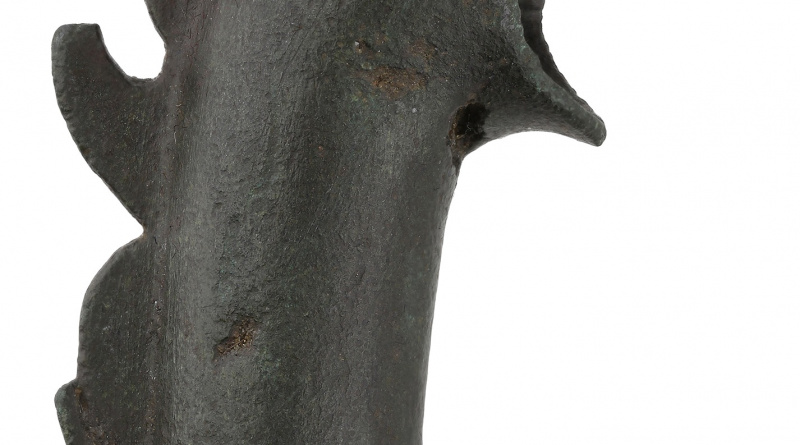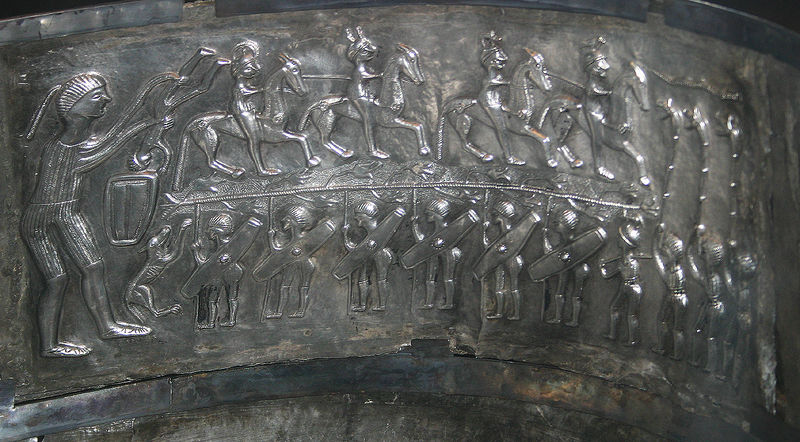Celtic, bronze Carnyx
This is a detecting find from Suffolk in 2018. For the story of the find see DNW to sell Celtic Carnyx. The auctioneer describes the item as being a Carnyx, which was a wind instrument of Iron Age Celts.
Deskford Carnyx
The only previous recorded carnyx from Britain is the Deskford carnyx which was found in the north-east of Scotland around 1816.
It is wrought from sheet bronze and brass, which helps to date it because brass is not native to Scotland and it would be recycled Roman metal. The suggested date for the Deskford Carnyx is AD 80 – 250.
The auctioneer draws a comparison to this carnyx saying “ the snarling open-mouthed boar with its bristling spine is a compelling argument that it is in fact a miniature sounding bell.“
Carnyx
The carnyx was once widespread throughout much of Europe, although only a dozen or so fragments survive.
The instrument is known from depictions on coins and reliefs, notably from Trajan’s Column and one of the plates of the famous Gundestrup cauldron (shown here); there are three carnyx players in the bottom right.
It was used in warfare to incite troops to battle and intimidate opponents. The instrument’s height allowed it to be heard over the heads of the participants in battles or ceremonies.
PAS record
The find was recorded at the PAS as SF-5A50AE. It states that there is no exact parallel for this find.
The PAS record says that the function of the object is uncertain and suggests multiple interpretations. These include a spout for a vessel, a decorative mount a finial mount for the end of a staff. It also suggests that it could represent the finial of an iron firedog, citing a similar find on the database NCL-51AB07.
It also says “Lastly, there is also a striking resemblance between this piece and the form of Later Iron Age carynxes (war-trumpets), which typically depict boars forming the ‘business end’-though of course are vastly larger.“



